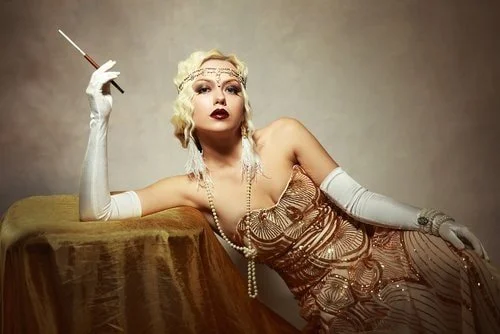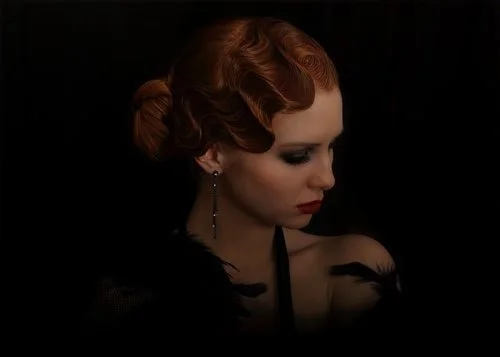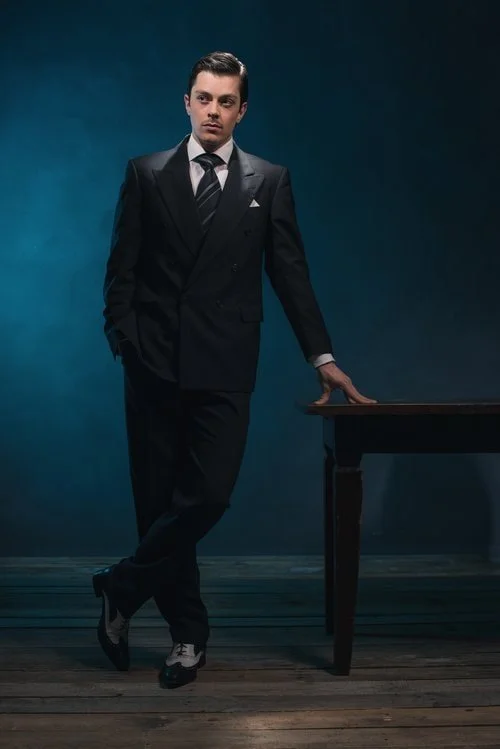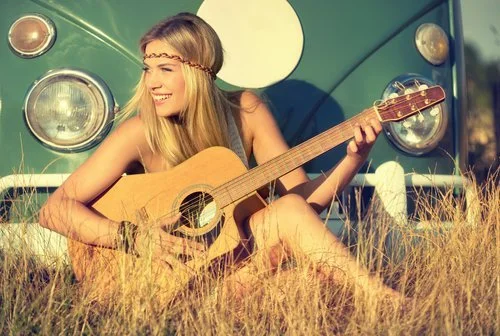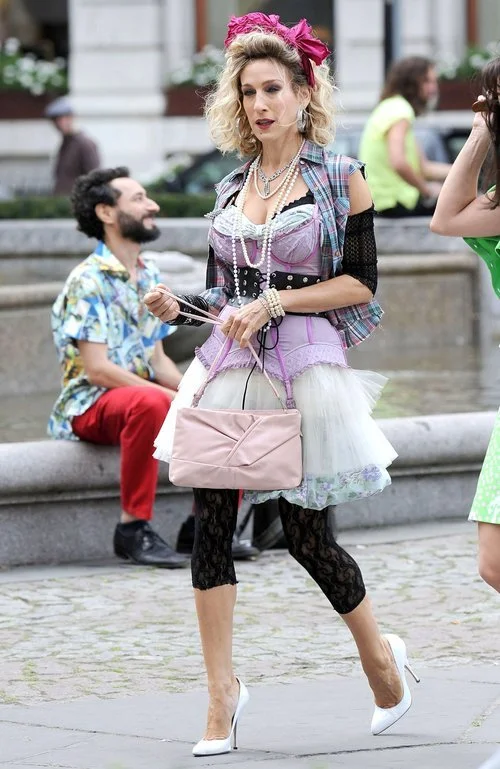Written by Jessica PugliaUnveiling Timeless Beauty Trends: Hair Across Eras
Exploring Iconic Styles
Takes you on a journey through the evolution of hairstyles from different eras. From the elegant updos of the victorian age to the bold and daring cuts of the 1980s, discover how cultural influences, fashion trends, and social movements have shaped our perceptions of beauty over time. This captivating exploration highlights the artistry and significance behind iconic hair trends, offering insights and inspiration for anyone looking to embrace the timeless charm of hairstyles throughout history. Join us as we celebrate the creativity and diversity of hair, showcasing how each decade left its mark on the world of beauty.
Queen Elizabeth | 1500
By the sixteenth century, Queen Elizabeth emerged as the quintessential female icon, dictating fashion trends of the era. Her striking pale complexion paired with her iconic red hair inspired women everywhere to stockpile white face powder and red wigs to emulate her look. Interestingly, a doctor of the time suggested a rather unconventional remedy for hair restoration, recommending a concoction of boiled slugs, olive oil, honey, saffron, soap, and cumin to be applied directly to the scalp. This blend reflects the unique and often bizarre beauty practices of the age, highlighting the lengths to which individuals would go to achieve the sought-after Elizabethan allure.
Mile High Coiffures | 1701
The eighteenth century ushered in a dazzling era of extravagant wigs, towering coiffures, and intricately styled curls. It became a fashionable statement for both men and women to adorn themselves with white powdered wigs accentuated by long ringlets, often secured with a black bow for men or embellished with feathers, bows, and floral garlands for women. Embracing the motto that "bigger is better," some of these impressive hairstyles required hours of meticulous creation, heavily starched and powdered to achieve their dramatic heights. Among the elite, the "tower" hairstyle gained immense popularity, particularly through the influence of Marie Antoinette. However, this trend faced a setback with the introduction of a substantial tax on wig powder, leading to the decline of male wig-wearing. Notably, this era also saw the emergence of the term "shampoo," derived from the Hindi word "champna," as English hairstylists began crafting their own solutions by boiling soap with water and infusing it with fragrant herbs for hair care.
Elegant Era | 1800
During the Elegant Era of the 1800s, hairstyles exuded a sense of sleekness, shine, and overall health. The prevailing trend favored elegance, with hair smoothed down using oils and styled into long, luxurious ringlets. Fringes were kept short, while decorations became more understated. Hairnets emerged as a popular accessory, designed to gently hold curls in place and typically secured at the back of the head with a simple ivory comb or black bow. As the century progressed, styles evolved to feature hair often plaited and wound into substantial coils, meticulously pinned at the nape of the neck. Neatness was paramount; loose hair was considered improper.
Innovations in hair care began to flourish during this time, with the invention of metal hot combs in France, allowing for the temporary straightening of textured hair. The first curling iron was also introduced by French inventor Marcel Grateau, revolutionizing how curls could be achieved. In Chicago, Brisbois and Federmeyer established the first hairdressing academy, paving the way for professional hairstyling education. Furthermore, Alexandre Godefoy made strides in hair care history by inventing the first electric hair dryer, marking significant advancements in hair grooming techniques.
Roaring | Twenties
The Roaring Twenties introduced a bold new era in hairstyles, characterized by short, bobbed, and waved looks that embodied the spirit of independence and the liberated woman. This striking style shift was a reflection of the changing social dynamics of the time. Meanwhile, men's hairstyles remained short, often styled with a center part and slicked back using highly fragrant oils, creating a polished appearance. The short bob emerged as the definitive haircut for women, capturing the essence of the decade.
During this transformative period, the first men's hair product, "Brylcreem," was developed using a blend of mineral oil, beeswax, and water, catering to the grooming needs of the modern man. Additionally, the "cold wave" perm was invented, offering a convenient and cost-effective way to achieve curls in just two hours, solidifying its popularity among those seeking stylish, easy-to-maintain looks. The 1920s marked a significant evolution in hair fashion, aligning perfectly with the cultural shifts of the time.
Glamorous | Thirties
"The Glamorous Thirties: Elegance and Innovation in Hairstyles" captures the essence of the 1930s, a decade defined by sophistication and artistry in hair fashion. As Hollywood's golden age blossomed, glamorous waves and intricate updos became the hallmarks of feminine beauty, with starlets setting trends that women everywhere sought to emulate. Soft, flowing curls and side-swept hairstyles exuded charm and allure, while men's haircuts transitioned to more tailored styles, often featuring slicked-back looks that emphasized a polished appearance. Innovative techniques, such as the introduction of the first electric curling iron and permanent waves, revolutionized hair care, making it easier for individuals to achieve these coveted looks at home. This decade epitomized the marriage of style and modernity, reflecting a society eager to embrace elegance during a time of great change.
Rising Starlets | Forties
In the 1940s, soft curls cascading over the shoulders and long, wavy, natural hairstyles took center stage. However, due to rationing during the war, shampoo and other non-essential beauty products became scarce. Women often opted for a tidy roll around the nape of the neck and over the ears, commonly covering their hair with a knotted headscarf that left only the fringes exposed.
Plastic hair rollers became vital for achieving the perfect style, while styling lotion was essential for keeping hair in place for as long as possible. This decade also marked a significant innovation in hair care: the U.S. government developed the first aerosol hairspray during WWII, originally intended for military use. The aerosol can was created as a means to distribute insect repellent to soldiers in an effort to ward off malaria, ultimately paving the way for a revolutionary hair styling product that would change the beauty industry forever.
Domestic Goddess | Fifties
The 1950s marked a transformative era in hair styling, characterized by a plethora of techniques that often put hair through considerable strain. Hair was teased, sculpted, sprayed, and permanently waved to achieve perfectly defined curls, resulting in styles that resembled sleek, immaculate helmets. Women began flocking to salons on a weekly basis for the quintessential "shampoo and set," a ritual that became a staple of the decade's beauty routine.
Men, too, became increasingly conscious of their hairstyles, striving to emulate the iconic looks of their idols like James Dean and Elvis Presley. Greased-back hairstyles, complete with long, heavy sideburns, became a popular choice among the male populace. Meanwhile, platinum blonde hair gained immense popularity, largely influenced by the glamorous allure of Marilyn Monroe.
Adding to the decade's innovations, the first liquid shampoo, known as "Dop," made its debut on store shelves, revolutionizing hair care. Additionally, sewn-in hair weaves emerged as a fashionable option, allowing individuals to enhance their hairstyles further. Overall, the 1950s epitomized an era of bold experimentation and glamorous self-expression in hair fashion.
All American Girl Next Door | Sixties
The 1960s ushered in a departure from the elaborate hairstyles of previous decades, as simplicity became the hallmark of beauty. Many women gravitated towards short, back-combed styles that could be effortlessly achieved and held in place with hairspray, often accompanied by a long, feminine fringe. For those who preferred longer hair, loose styles or simple ponytails became the norm, often adorned with flowers or ribbons as a nod to the fashionable hippie movement.
The focus during this era shifted to embracing natural, healthy looks. Blonde hair reigned supreme, while darker tresses were frequently highlighted to achieve a sun-kissed effect. This decade also saw the emergence of the "Afro," celebrating natural texture and individuality. Overall, the 1960s exemplified a refreshing change toward effortless styles that highlighted personal expression and a carefree spirit.
Free-Spirited, Earthy & Flowing | Seventies
The 1970s celebrated manes adorned with free-falling curls, gentle partings, and long fringes, heavily influenced by the iconic style of the cult TV series "Charlie's Angels." Men's hairstyles also softened during this era, giving rise to feathered cuts, highlights, and soft layers that radiated a more approachable vibe. The focus was on achieving a natural look, leading to minimal product use in hair styling.
As the decade progressed, pockets of rebellion emerged against the prevailing floral and romantic aesthetic. The punk movement briefly took hold, showcasing striking hairstyles that included spiked hair and vivid hues in primary or fluorescent colors, often complemented by tattooed scalps. Additionally, the "Jheri Curl" made a significant impact on the Black hair scene, introducing a new texture and style that embraced individuality and self-expression. Thus, the 1970s became a dynamic decade for hair, marked by both free-spirited beauty and bold, countercultural styles.
Age of Excess | Eighties
The 1980s heralded the popularity of the long bob, characterized by its meticulous cuts and uniformly curled under, achievable only by a skilled hairdresser. This classic style represented the decade's commitment to precision and polished looks. Conversely, a more rebellious spirit emerged, inspired by Madonna’s constantly evolving fashion. Those seeking to break the mold sported unconventional, choppy hairstyles in bold, off-colored hues, perfectly complementing their eccentric clothing choices.
This dynamic decade also witnessed a significant innovation in hairstyling when Theora Stephens introduced the first modern-day curling iron, known as the pressing iron. This tool revolutionized the way individuals achieved curls and waves, making dramatic hairstyles more accessible than ever before. The 1980s truly encapsulated the Age of Excess, with hair serving as a powerful canvas for personal expression and fashion experimentation.
Trend Driven & Iconic | Nineties
The 1990s were defined by a whirlwind of hair and beauty styles, where virtually anything went. One major trend was the 'Rachel' cut, inspired by Jennifer Aniston's character in "Friends," featuring long, sleek hair with layered lengths, a grown-out fringe, and face-framing highlights. Short, choppy styles also gained popularity, with a messy, carefree look becoming a staple for many. Regardless of length, a notable shift saw a significant number of women opting for blonde hues.
Men, on the other hand, gravitated towards short or bald cuts, emphasizing simplicity. This decade also marked the widespread availability of commercial flat irons, enabling individuals to achieve sleek, straight hairstyles at home. Overall, the '90s embraced eclecticism and personal expression, making it a transformative period in hairstyling.
An Every Evolving Era | The 21st Century
Hair in the 21st century is characterized by a remarkable blend of trends and innovations. This era has seen the rise of bold colors, with pastel hues and balayage techniques capturing attention. The popularity of natural textures has gained momentum, highlighting the beauty of curls and waves, while styling tools like hot air brushes and advanced curling wands offer versatility and ease.
Social media has significantly influenced hair trends, making platforms like Instagram and TikTok pivotal in the dissemination of new styles, from intricate braids to edgy cuts. Sustainability has become a major focus, leading to eco-friendly hair products and practices gaining traction. Additionally, breakthroughs in hair technology, such as hair health treatments and advanced coloring techniques, have allowed for safer and more creative options.
Overall, the 21st century embraces individuality and experimentation, with personal expression taking center stage in hair fashion.




